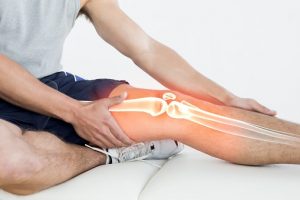 A recent study suggests that those who suffer from irritable bowel syndrome with constipation or IBS-C have a higher risk of having hypermobile joints than people who have IBS-D, which is the same bowel syndrome only with the main symptom being diarrhea.
A recent study suggests that those who suffer from irritable bowel syndrome with constipation or IBS-C have a higher risk of having hypermobile joints than people who have IBS-D, which is the same bowel syndrome only with the main symptom being diarrhea.
Irritable bowel syndrome is a common health problem that affects the large intestine. Symptoms can include abdominal pain, bloating, gas, cramping, diarrhea, or constipation. Unfortunately, it’s a chronic condition that most people have to manage for the long-term.
Advertisement
Anywhere from five to 14 percent of the population suffers from IBS depending on what part of the world you look at.
Having hypermobile joints means that the particular joints move beyond the normal range expected. This does come with pain, especially in the knees, fingers, hips, and elbows. While previous studies have shown some connection between hypermobile joints and gastrointestinal problems, there has never been an association drawn between the condition and IBS subtypes until now.
In this recent study, just over two hundred IBS patients were analyzed. The patients were categorized into subtypes: irritable bowel syndrome with IBS (IBS-C) and irritable bowel syndrome with diarrhea (IBS-D). A third group had mixed IBS.
Joint hypermobile syndrome (JHS) was defined with a Beighton Score. This is a system that qualifies joint laxity and hypermobility using an easy nine-point system. The higher the score is, the higher the laxity. A score above six usually indicates hypermobility.
As it turned out, cases of joint hypermobility appeared to be highest in the subtype IBS-C.
During the study, the researchers also turned to a system called the Rome III criteria. The Rome III criteria requires abdominal pain or discomfort at least three days/month in the last three months, associated with two or more of the following: improvement with defecation, onset linked with a change in stool frequency, or onset linked with a change in stool appearance.
Out of 228 irritable bowel syndrome sufferers, 64 had IBS-C, 89 suffered from IBS-D, 27 had IBS mixed, and 27 were classified as IBS-U. The average age of IBS sufferers was 35, but the majority of joint hypermobility patients were much younger.
After taking Beighton and Rome III, as well as other health factors into account, those with irritable bowel syndrome (IBS-C) had a higher prevalence of hypermobile joints. When it came to IBS-C, 57.8 percent showed signs of joint hypermobility, while only 34.8 percent of those with IBS-D seemed to have JH. It was also discovered that those who used laxatives and manual assistance for defecation were more likely to suffer from joint hypermobility.
The experts who carried out the study have reported that abnormalities in the connective tissue biomechanics in people who have joint hypermobility may contribute to colonic inertia, which could possibly lead to constipation in JH positive IBS patients. Colonic inertia is simply defined as an abnormal passage of waste through the digestive system.
Advertisement
The link between IBS-C and joint hypermobility (JH) has raised questions about whether people with gastrointestinal symptoms should be screened for JH. Screening could include anorectal manometry, which is a test that can measure pressure in the anal sphincter muscles and neural reflexes required for a normal bowel movement, as well as magnetic defecography, a special type of MR imaging whereby images are taken at different stages of defecation.
The authors of this study realize that more research is needed to pinpoint the exact biological mechanisms that lead to the IBS in the first place. They hope their findings will encourage new investigations in the area of IBS, as well as IBS-C with joint hypermobility.
Related:
- Irritable bowel syndrome patients can benefit from yoga
- Manage irritable bowel syndrome symptoms with relaxation exercises and techniques
